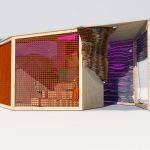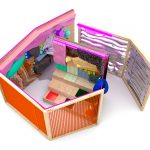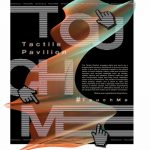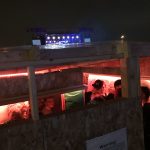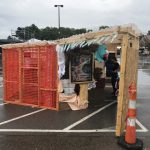How to make a button in the Isadora Window
Posted: September 25, 2018 Filed under: Uncategorized Leave a comment »PP1 – narrative sound and music
Posted: September 25, 2018 Filed under: Uncategorized Leave a comment »There are few things I like more than conspiracy theories, old science documentaries, and the king of rock and roll. Rarely do these treasures have a chance to coexist yet, in this first pressure project, I had the opportunity to create an auditory narrative of an urban legend using all three of my favorite things.
To speed up my workflow, and to follow the 5 hour time allotted, I made a list of what I needed to do. It began by coming up with what I wanted the story to be, how I wanted that story to be told, and then the steps I needed to accomplish that plan. My list ended up looking like this:
- Elvis was always alive
- Use Elvis Songs, create sentences using multiple audio tapes (inspired by this song I was listening to at the time), create sound bites that are choppy to create controlled confusion that evokes the sense of a conspiracy
- Gather all sounds that I might use first, import all sounds to after effects and cut out the pieces of what I want to use. Place those sounds in order and then fill in where there are gaps or information needs added to the story.
1. Elvis was Always Alive
To better understand the created narrative, one should know the original urban legend from which it was derived (the full story AVAILABLE HERE) .
2.Use Elvis Songs
To begin, I started by taking every Elvis song lyric (thanks wiki) and put them into a plain text doc. There, I picked apart the song lyrics to find the best songs that would match the story theme. Those songs were It’s Impossible, Lonely Man, You Don’t Know Me, All That I Am, and In the Ghetto.
Create sentences using multiple audio tapes.
From there, I knew that I wanted to be clear on parts of the story, so I found various news reports and took just one word from each video to piece together sentences.
Create sound bites that are choppy to create controlled confusion that evokes the sense of a conspiracy.
I didn’t want the entire story retold in word clips, so I took various sound bites that dealt with what I was trying to say, without actually saying it and put them in order of the story. This was to create a little bit of confusion for the listener, who could maybe get at what the story was trying to tell, but only if they drew their own conclusions or made their own assumptions of what was the truth (similar to a conspiracy).
3. Gather all sounds then fill in what it needed
After importing all the sounds, I realized that I had not addressed the DNA part of the story. I immediately thought of recent videos I had watched and found similar videos on James Watson and the structure of DNA.
Once time ended, I stopped working. I would have liked to have added visuals, but with the time constrains, it would have negatively affected the overall presentation. I am pleased with the final outcome and really appreciated the feedback from the class. I think that everyone was spot on in their assessments, and I’m happy that they were able to make the connections I hoped they could make.
PP1
Posted: September 24, 2018 Filed under: Uncategorized Leave a comment »For this PP1 project, I created a world inspired by the short story Where the Wild Things Are. Personally, I loved the story and wanted to explore what it would be like it influenced and told from the point of view other than the European slant it always had. In conjunction with this, I had visited Thailand a few years ago. The Island reminded me of the magical land portrayed in the story.
I decided to follow the storyline of WTWTA loosely using sound as the main driving force. I found that I did not have enough resources in sounds alone to convey the story as I wanted to tell it. Having a bunch of photos of this amazing place, I decided to use the photos as a background for the video. I used cutout animation for the foreground and used Premier 2018 to edit multiple layers of the film to give the illusion of depth and movement.
My feedback was very interesting. If I had to do it over again, I would have removed the iconic image of the monster so well known from the story. I thought that the audience would miss the reference, but instead, I felt I had provided something that was a bit too much on the nose. Anyway, I was extremely happy with the way it turned out and would only make that minor change if I edited it.
Joe Chambers
PP1
Posted: September 23, 2018 Filed under: Brianna Rae Johnson, Pressure Project I 1 Comment »Ok, so a story of cultural significance with sound…
I think I fixated on a story of cultural significance for me (in my lifetime). I started researching by watching hours of news footage from the morning of September 11, and processed the events as if for the first time. I remember feeling shocked, but it all felt surreal. There were so many pieces that I couldn’t understand as a 14 year old.
I watched stories about people who were in the towers and their families. I listened to peoples’ screams as they watched the second plane hit. I learned about another plane that went down in a field. I listened to voicemails from people who were on the planes.
I remember the Mr. McKegg’s (the principal’s) voice come over the intercom to announce that there has been a terrorist attack. Two years after the columbine shooting, I was among many who initially thought that our school had been attacked. I probably felt relieved to learn that the attack was so far away! I remember watching the second plane hit from the heath classroom at my middle school. I remember TVs being on all day at school. I remember the World Trade Center happening to be pictured in our math books on the page that we happened to be covering that day. I remember feeling somewhat pleasantly surprised by the coincidence. I remember getting off the bus and my mom, exasperated, asked if my brother and I were ok. I remember feeling like I should be more emotionally effected.
Now, in 2018, I think I understand the exasperation that I didn’t feel at 14–and if I could be this effected by listening to these voices, screams and reports, I think others might too. Is it ethical to put the unsuspecting DEMS group through this without them knowing what they will hear? Should I pick something else? I hadn’t come up with a different concept, and didn’t feel like i had time, so I leaned in and crossed my fingers that it would be ok. I tried to dampen the impact of the sound by locating it within my school day. I hoped to tell the story from my 14 year old perspective, but didn’t want to make light of it either. However, we are not middle schoolers anymore, and we all have our own memories of the event.
On youtube, I found the sounds of electric school bells, the pledge of allegiance, gym class, and kids voices to start it off, and began playing with how much of each clip to listen to and at what volume. Then, I went into the sounds of the event. Trying not to make light of it, I think I went heavier than necessary. I wanted the sound of the plane hitting because I remember the visual, but that part is pretty intense. Then, silence, the sounds of tv static, the sound of an old TV clicking off, and more silence. Finally, it drops into math class saying, “To simplify, we can only combine what we call our like terms.” Not only was this math class, but it seems like a nod towards the political climate that grew out of 9/11 and heightened perceptions of sameness and difference. 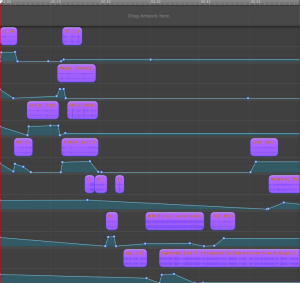
But what about showing this to a bunch of people who don’t know what they are in for? I debated giving a trigger warning, but also knew that it would impact their experience. Then, in the moment, I pushed play and suddenly realized that I hadn’t said anything. I crossed my fingers harder.
For the most part, people heard what I hoped they would hear, but they heard their own experience of it too. I told my story, and they understood–but they seemed to feel their own story. People have their own associations with familiar sounds.
So, here it is. Listen if you’d like.
PP1
Posted: September 20, 2018 Filed under: Assignments, Uncategorized Leave a comment »For my first pressure project I chose to tell the story of The Jungle Book in just over a minute. I created a sound score from audio clips of a nostalgic tape-recording of the classic Disney tale. After assembling the sound score, I gathered some visuals from the VHS 1967 film. From there, I decided to assemble the audio and visual clips using Isadora. I used Isadora so I could project multiple videos at once and animate the projections. I also wanted to become more proficient at the program and I definitely learn by doing.
This work was centered around nostalgia and the reinvention and evaluation of childhood memories. My colleagues commented that they felt like they rewatched the full hour and a half movie in a minute because the key frames and quotes reminded them of the full scene. The time constraints turned the project in to a very concentrated reflection. During the critique the class also discussed the issues with the moral complications of race and culture associated with The Jungle Book. Though my concentrated reflection was able to avoid some of these complications, the issues should not and can not be invisibilized.
As a whole, I really enjoyed making this work and was inspired by all of the other interpretations of this pressure project!
PP1
Posted: September 20, 2018 Filed under: Pressure Project I Leave a comment »Information about methodology, intent, and reflection below.
Pressure Project 1
Posted: September 19, 2018 Filed under: Pressure Project I Leave a comment »For Pressure Project 1 I chose to tell a story about the history of my ancestry. I was quite surprised to find out when I was a teenager that I actually am Wendish and not German. Most people have no idea who the Wendish are and to me that makes me feel unique in a way. I wanted to portray the feeling of where I am happy to know that I am actually Wendish but I have a sense of sadness knowing what the Wendish went through. When I created my Pressure Project I wanted to try to convey a disjointed feeling. I had upbeat music that had lyrics about having no roots and a visual that was showing a unpleasant beginning roots to who I am. I chose to use PowerPoint as I am familiar with this program and did not want to go over the five hours allotted.
When I presented my project I got a mixed reaction to what my classmates experienced. The disjointed feeling was what I was trying to get across and in that I did succeed in what I wanted to accomplish. My classmates were able to understand the story I was trying to convey but many, as I perceived their response, did not respond well to the experience.
In response, I wanted to revisit this project and in doing so I stayed strictly to audio and no visuals. Although I will not be presenting this in class I wanted to go ahead and post it here to allow anyone that would like to experience it to be able to. This was an eye opening exercise that now gets me thinking about how much time I really do spend working on projects.
Note: the link is to a PDF of what was presented in class with the top audio file being the music that played under the PowerPoint. The PowerPoint file is too large to post. The second audio file is my Response to Pressure Project 1.
Pressure Project 1
Posted: September 18, 2018 Filed under: Uncategorized Leave a comment »I chose to recreate a story that my father used to tell me and my brother when we were little. He embellished the original version with aspects of our own lives, so it always meant more to me. It was about a rooster, a cat, and a parrot, who all lived together in the forest. The parrot and cat would go out, and the rooster would continually be tricked by a fox to stick his head out of the window so he could grab him and run off. The final time he gets tricked you think he may not survive, and then out of the woods come me and my brother and cousins who save the rooster.
Although this story means a lot to me, I definitely did not expect my classmates to know the story. Therefore, I was hoping that they would focus more on the way the imagery and sound created a mood. I am always fascinated by mood more than anything, and I was trying to recreate the panic and eeriness that I felt during some children’s stories as a kid. I used almost completely Iranian music and wove it together, and when I felt the audio needed other elements, I tried really hard to mix the music in a way so that it sounded like it had always been that way. I wanted lots of overlapping, and therefore I had to really get to know Isadora in order to make that happen. I had to make a string of trigger delays, wave generators, and scene entrance triggers and play with the timing for each scene so that it flowed more easily. It took me a lot of time but it was a great way to feel more confident in the program by the end!
I was very shy to share it with classmates because it was such a personal story and it was Iranian. Even though I would have liked more time to get thoughts and feedback from my classmates about their experiences, I felt very proud of myself for what I had created.
Pressure Project 1
Posted: September 17, 2018 Filed under: Pressure Project I Leave a comment »For my pressure project, I chose to tell the story of Alice in Wonderland, using the Disney 1951 movie.
In doing this, my first inclination was to capture the atmosphere of Alice and Wonderland, since the story is notoriously nonsensical. I felt that capturing the feeling of being lost along with Alice’s struggles to get home in a world that makes no sense would evoke more compelling emotional reaction than trying to capture the plot of the movie.
Some things I struggled with were the software I used. I haven’t used GarageBand in about a decade, and there was a bit of a learning curve that ate up a chunk of time. In addition, I had to comb through the movie rather quickly as I hadn’t seen it beforehand, only ever read the original work.
I really liked the time limit of the sound piece, as it forced me to be more choosy in which audio clips I utilized. I had to cull quite a bit of the original iteration of this project, and I believe it turned out the better for it.
For my workflow, I just dropped the entire movie I found online and chopped it up until I got my desired result.
Tactile Pavillion
Posted: August 28, 2018 Filed under: Uncategorized Leave a comment »Last Thursday I was unable to make it to class- I wanted to share with all of you what the project I was working on at the time!
As the poster states, the Tactile Pavilion engages sight and touch as a supplemental sensory experience to the surrounding music festival. It is a way to immerse oneself in the playful nature of found objects. Interior walls are covered in recycled and re-used materials such as textiles, metals, and plastics. Exterior walls are clad with construction mesh and bare wood. Insulation oozes at the connections. The pavilion’s functionality offers seating, shelter, and a place to relax and reset- devoting a full wall to signage made from the scraps of interior panels. The pavilion experiments with the engagement of alternative senses. It is not an escape from the music, but a deeper connection.
There will be more images/ descriptions about the project that you can check out at my personal site- https://marcd.co

